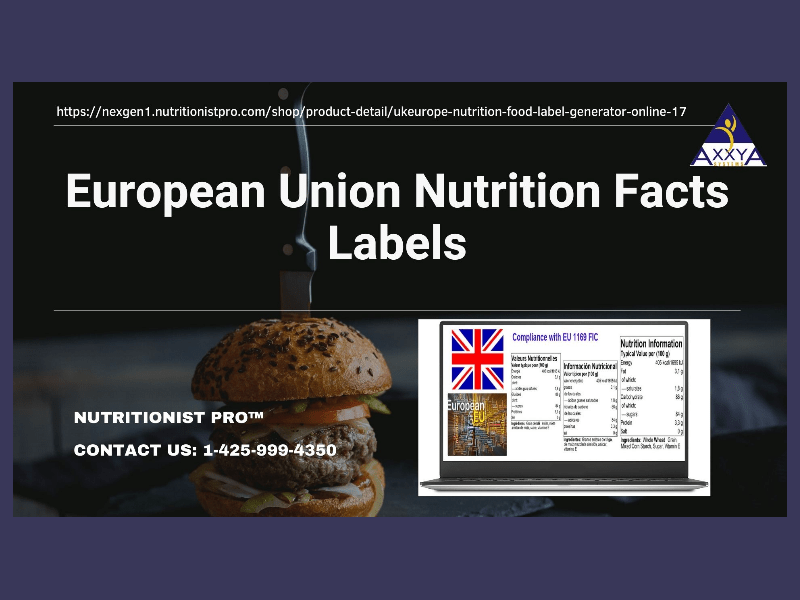In the European Union, the labelling rules enable consumers to obtain complete data about the food nutrients. Food nutrition facts labels help to make informed choices while purchasing foods.
The EU regulation No. 1169/2011 sets up the general principles, requirements and responsibilities, governing food information and food labelling. The goal of laying down this rule is to ensure the rights of consumers for food nutrient information. This rule is applicable for food business operators, who are engaged in food manufacturing, providing food services, and everyone who requires food analysis and labelling.
Food labelling is a prerequisite for prepacked foods. The regulation sets out a list of mandatory particulars that are required to be provided to the final consumer.
Mandatory Information for EU Food Labelling:
- Name of the food
- List of ingredients
- Any ingredient or processing aid or derived from a substance or product causing allergies or intolerances used during the manufacturing or preparation of a food
- Quantity of certain ingredients or categories of ingredients
- Net quantity of the food
- Date of minimum durability (‘best before’ date) or the ‘use by’ date
- Mention of special storage conditions and/or conditions of use
- Name or business name and address
- Country of origin
- Instructions for use
- Nutrition declaration
As per the regulation of European Union nutrition facts labels, the food labels need to display a nutrition declaration. The label information has to include energy value and the amounts of fat, saturates, carbohydrate, sugars, protein and salt of the food. The nutrition declaration must be presented in a legible tabular format on the EU nutrition facts labels. The linear format is recommended for labels to minimize space used. See nutrition declaration labels on the back of food packaging.
Why Front-of-Pack Nutrition Facts Labels?
Front-of-pack nutrition facts labels on prepacked foods are simplified nutrition information, aiming to help consumers with their food choices. Under the current EU rules, the indication of nutrition information on the front-of-pack is not mandatory but could be provided on a voluntary basis.
Nutrition and Health Claims
There is a clear guideline for European Union nutrition facts labels. It’s a framework used by food business operators while seeking to highlight particular beneficial aspects of their food items, in relation to health and nutrition, on the product label or in its advertising. For instance, ‘low fat,’ ‘sugar free,’ etc. food claims, which sometimes tend to mislead consumers. A reason why regulations for European Union Nutrition Facts Labels mandate displaying clear and accurate food nutrient information.
How Do Food Business Operators Create Food Nutrition Facts Labels?
There are manual solutions and automated solutions. The manual method is a use of a laboratory for testing while the automated method is the use of database software food nutrition facts analysis and labelling method. Given the options, it is clearly understandable that the automated method of analysis and labelling be cost effective and quicker.
Benefits of Using a Food Labelling Software:
- Quicker and easier method
- Compliance with food labelling guidelines is a snap
- Creation of unlimited food label styles possible
- Create food labels in English, French, Spanish
- Allow users to build unlimited recipes/formulas using a European Food database
- Allow users to add custom ingredients as needed
Nutritionist Pro™, an end-to-end food nutrition analysis and labelling software, can automatically format the European Union nutrition facts labels with the correct layout, font size, nutrient list, and label styles.
To learn additional details of this robust and intuitive food analysis and labelling software, visit Nutritionist Pro™, by clicking here
